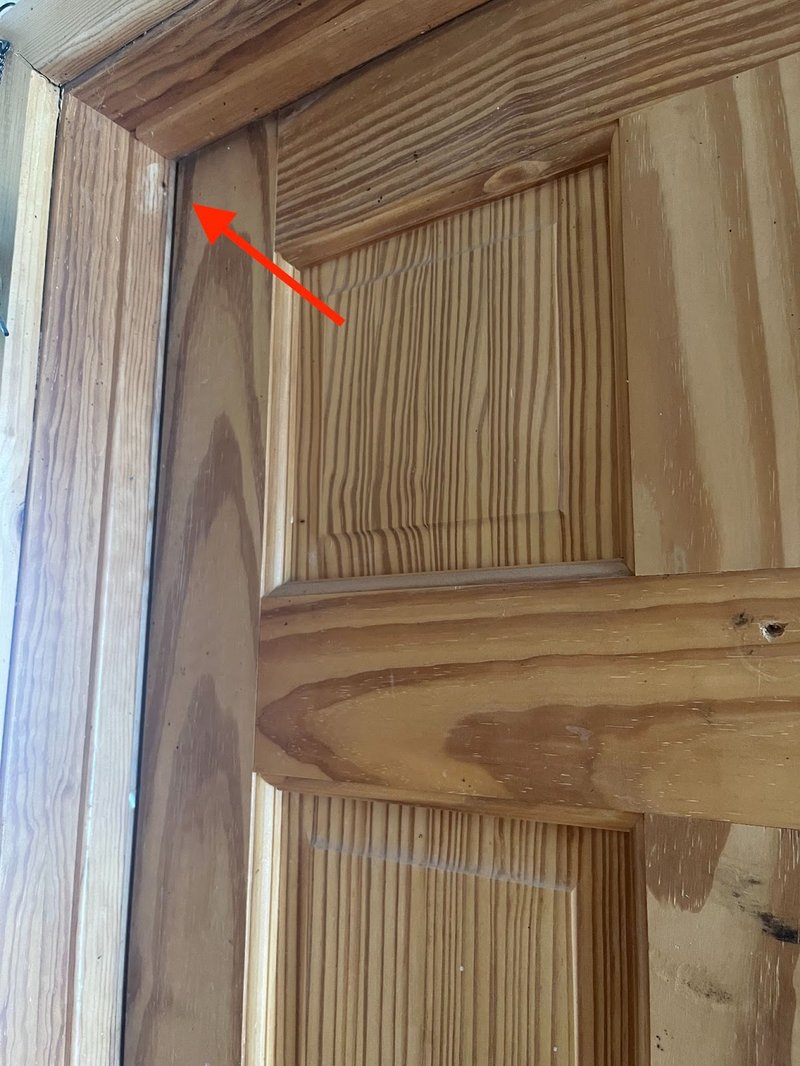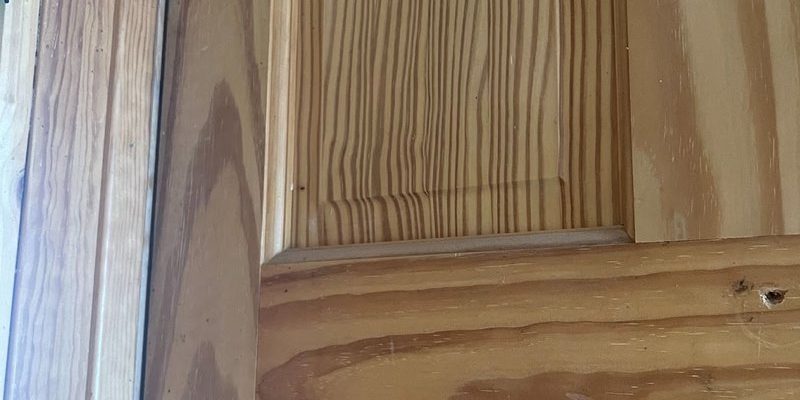
Honestly, a drafty exterior door isn’t just uncomfortable—it can make your energy bills climb and even mess with your attempts to keep dust, bugs, or humidity outside where they belong. Doors are supposed to shut you off from the outside world, so why does it feel like your door has a secret passage for cold air? Let’s break down what’s really going on and how you can fix it for good.
Common Reasons Your Exterior Door Feels Drafty Along The Bottom
Let me explain: doors are meant to seal tightly when you close them, but several things can mess with that perfect fit. The most frequent culprit is a worn-out or missing door sweep—that’s the strip along the bottom edge of the door that blocks out air. Over time, these sweeps wear down, crack, or even fall off completely.
Another big reason is a problem with the weatherstripping. Think of weatherstripping as the soft gasket that lines the bottom or sides of your door frame. If it’s gotten flattened, brittle, or torn, it just won’t do its job anymore. Sometimes, it’s not even there to begin with—especially in older homes or after a poor repair job.
Lastly, the door threshold (the piece you step over at the very bottom) might be too low, too high, or sloped in a way that leaves a gap under the door. Even a tiny opening can let in a surprising rush of cold air. If the threshold isn’t adjustable or was never installed correctly, you’re almost guaranteed to feel a draft.
How Door Sweeps and Weatherstripping Work
You might be wondering what these “sweeps” and “weather seals” really do. Here’s the thing: a door sweep is usually a flexible rubber, vinyl, or bristle strip that attaches to the bottom of your exterior door. When the door closes, the sweep brushes or presses against the threshold to block airflow. If your sweep is missing or damaged, it’s like leaving the window open a crack all winter long.
Weatherstripping is a bit different. It’s installed around the perimeter of the door frame—sometimes including the bottom edge, depending on the design. The job of weatherstripping is to close up any tiny gaps between the door and the frame, so heat stays in and cold, dust, or pests stay out. Common types include foam tape, V-strips, and metal or rubber gaskets.
If your door uses a brand-specific sweep—say, a Pella Endura or a Masonite replacement—it’s crucial to get the right size and type. Universal sweeps and generic weatherstripping kits exist, but if you want the tightest seal, matching the original is usually best. Trust me, I’ve seen homeowners waste hours trying to “make it fit” when a quick trip to the hardware store for a name-brand part would save a ton of hassle.
Drafts and Energy Efficiency: Why Bottom Gaps Matter
It’s easy to ignore a little draft, but that pesky cold air is working against your comfort—and your wallet. Here’s why: when warm air leaks out around the bottom of your door, your heating system has to work overtime to keep the room at your desired temperature. Over time, that means higher energy bills, more wear on your HVAC, and less predictable comfort.
Let me put it another way: even a gap as small as a quarter-inch (about the thickness of two nickels) can let in as much cold air as driving with your car window cracked open in January. It’s not just about air, either. Moisture, dirt, and insects see that opening as a front-row invitation to your cozy living room.
If your home uses a digital thermostat, “smart” heating system, or even those little temperature sensors that come with fancy remotes, you might notice they often react to the draft before you do. Suddenly, your system is cycling on and off more often, trying to “pair” with your comfort commands, and you’re left wondering why things feel off—even after a reset.
How to Spot the Source of a Draft
You don’t need a toolkit the size of a mechanic’s to find where air is slipping in. Here’s a simple way to test things: on a windy day, stand near your door’s bottom edge and try the candle or tissue test. Hold a lit candle (carefully!) or a tissue near the gap. If the flame flickers or the tissue flutters, you’ve found your draft.
Another trick? Run your hand slowly around the bottom edge. If you feel a chill, that’s where cold air’s entering. For a more high-tech option, use a thermal camera or even your phone’s built-in IR sensor, though most folks find the candle test is plenty effective.
- If the draft is strongest at the very bottom, focus on the door sweep and threshold.
- If it’s more to the sides or corners, the weatherstripping may be to blame.
- If the entire door feels cold, double-check the fit and insulation around the frame, not just the door itself.
Sometimes, after a heavy rain or dramatic temperature swing, the door may “settle” or shift slightly. This can create new gaps that weren’t there before—especially if the door wasn’t installed level or if the house foundation moves (which happens more than you’d think, especially in older homes).
Fixing Drafty Bottom Edges: Step-by-Step Repair Guide
Here’s the good news: fixing a draft at the bottom of your exterior door is usually a straightforward DIY job. You don’t have to be a professional installer or have a closet full of tools.
Step 1: Inspect the sweep and threshold
Open the door wide and look at the underside. If the sweep is cracked, brittle, or missing sections, it’s time for a replacement. Examine the threshold, too—it should meet the sweep snugly with no obvious daylight peeking through.
Step 2: Measure and buy the right parts
Remove the old sweep (usually by unscrewing or sliding it out), and measure its length and depth. Many big brands like Jeld-Wen, Masonite, and Therma-Tru offer direct replacements, but you can find universal sweeps that fit most doors. For weatherstripping, measure the thickness of your gap to ensure a snug fit.
Step 3: Install the new sweep and adjust the threshold
Attach the new sweep according to the instructions (usually, just screw it onto the bottom of the door). If your threshold is adjustable—and many are, especially metal ones—use a screwdriver to raise or lower it until it presses gently against the sweep. You want a seal, but not so tight that the door drags or sticks.
Step 4: Test your work
Close the door and check again with the tissue test. If the draft is gone, you’re set! If not, you may need to adjust the sweep, add weatherstripping, or check for damage to the door frame itself.
When to Call a Pro: Dealing with Bigger Problems
Sometimes, the fix isn’t as simple as slapping on a new sweep. If your door is warped, the frame is out of square, or the sill under your threshold is rotten, you could spend hours troubleshooting without solving the draft. Here’s when you should consider professional help:
- Your door won’t close all the way, or the latch doesn’t line up anymore.
- The threshold is loose, crumbling, or shows signs of water damage.
- You’ve replaced sweeps and weatherstripping, but there’s still a strong draft.
A skilled contractor or door installer can realign, shim, or even replace your door, frame, or threshold to restore a tight seal. In rare cases, they might recommend insulation foam or a full frame reset, especially with older homes that have settled over time.
If your door was a high-tech upgrade—like a smart fiberglass entry with built-in security or code access—you’ll want to make sure all repairs and adjustments won’t interfere with locks, sensors, or remotes. Sometimes, new sweeps or thresholds can block sensors or make wireless “sync” tricky, so get help if you’re unsure.
Choosing the Right Replacement Parts: Universal vs Brand-Specific
You might be tempted to grab the first “one-size-fits-most” door sweep you see at the hardware store, but here’s why it pays to slow down. Universal sweeps and weatherstripping can solve most basic drafts, but if your door is a certain brand—like Pella, Masonite, or Jeld-Wen—matching the OEM part ensures the tightest fit and smoothest operation.
Universal sweeps:
- Often adjustable and cut-to-fit
- Good for standard wood or metal doors
- May not seal perfectly if your threshold has a unique profile
Brand-specific sweeps:
- Designed to fit special grooves or cutouts on branded doors
- Usually a tighter, longer-lasting seal
- Sometimes more expensive or special order
When in doubt, pull the old sweep off and bring it with you to the hardware store. Compare the profile, length, and installation style to what’s available.
Preventing Drafts in the Future
Once you’ve patched up your door and banished that bottom-edge draft, you probably want to keep it from coming back. The trick is regular maintenance—nothing fancy, just a quick check every few months.
- Inspect sweeps and weatherstripping for cracks, gaps, or wear.
- Clean out dirt and debris from the threshold so the seal stays tight.
- If your area sees big swings in humidity or temperature, check for warping.
- Watch for insects or water pooling at the sill, which can damage wood and create new gaps.
If you notice a draft creeping back in, don’t ignore it. Small problems turn into big headaches if you wait too long. Just like resetting a remote or pairing a new device, a door’s seal should be checked, “reset,” and fine-tuned as needed.
Wrapping Up: Take Back Control of Your Comfort
A drafty exterior door isn’t just a minor nuisance—it’s your home’s way of telling you something’s off. Whether you have a classic wooden door or a high-tech fiberglass entry from a brand like Jeld-Wen or Therma-Tru, the fix is usually simple: replace worn sweeps, adjust the threshold, and check your weatherstripping. Even if you run into more serious trouble, like a warped frame or tricky locking system, knowing the basics arms you with the confidence to troubleshoot or call in a pro.
Strong, tight seals are the unsung heroes of home comfort. Don’t let that sneaky breeze keep stealing your warmth—or your energy dollars. With a little care and the right fix, your door can go back to doing its job: keeping everything you want inside, and everything else out.
